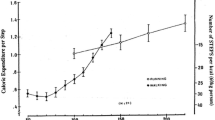Abstract
A portable and wireless activity monitoring system was developed for the estimation of temporal gait parameters. The new system was built using three-axis accelerometers to automatically detect walking steps with various walking speeds. The accuracy of walking step-peak detection algorithm was assessed by using a running machine with variable speeds. To assess the consistency of gait parameter analysis system, estimated parameters, such as heel-contact and toe-off time based on accelerometers and footswitches were compared for consecutive 20 steps from 19 individual healthy subjects. Accelerometers and footswitches had high consistency in the temporal gait parameters. The stance, swing, single-limb support, and double-limb support time of gait cycle revealed ICCs values of 0.95, 0.93, 0.86, and 0.75 on the right and 0.96, 0.86, 0.93, 0.84 on the left, respectively. And the walking step-peak detection accuracy was 99.15% (±0.007) for the proposed method compared to 87.48% (±0.033) for a pedometer. Therefore, the proposed activity monitoring system proved to be a reliable and useful tool for identification of temporal gait parameters and walking pattern classification.








Similar content being viewed by others
References
Saremi, K., Marehbian, J., Yan, X., Regnaux, J. P., Elashoff, R., Bussel, B., and Dobkin, B. H., Reliability and validity of bilateral thigh and foot accelerometry measures of walking in healthy and hemiparetic subjects. Neurorehabil. Neural Repair. 20:297–305, 2006. doi:10.1177/1545968306287171.
Abu-Faraj, Z. O., Harris, G. F., Abler, J. H., and Wertsch, J. J. A., Holter-type, microprocessor-based, rehabilitation instrument for acquisition and storage of plantar pressure data. J. Rehabil. Res. Dev. 34:187–194, 1997.
Zhu, H. S., Wertsch, J. J., Harris, G. F., Loftsgaarden, J. D., and Price, M. B., Foot pressure distribution during walking and shuffling. Arch. Phys. Med. Rehabil. 72:390–397, 1991.
Akay, M., Sekine, M., Tamura, T., Higashi, Y., and Fujimoto, T., Fractal dynamics of body motion in post-stroke hemiplegic patients during walking. J. Neural Eng. 1:111–116, 2004. doi:10.1088/1741-2560/1/2/006.
Evans, A. L., Duncan, G., and Gilchrist, W., Recording accelerations in body movements. Med. Biol. Eng. Comput. 29:102–104, 1991. doi:10.1007/BF02446305.
Aminian, K., Rezakhanlou, K., De Andres, E., Fritsch, C., Leyvraz, P. F., and Robert, P., Temporal feature estimation during walking using miniature accelerometers: an analysis of gait improvement after hip arthroplasty. Med. Biol. Eng. Comput. 37:686–691, 1999. doi:10.1007/BF02513368.
Zijlstra, W., and Hof, A. L., Assessment of spatio-temporal gait parameters from trunk accelerations during human walking. Gait Posture. 18:1–10, 2003. doi:10.1016/S0966-6362(02)00190-X.
Karantonis, D. M., Narayanan, M. R., Mathie, M., Lovell, N. H., and Celler, B. G., Implementation of a real-time human movement classifier using a triaxial accelerometer for ambulatory monitoring. IEEE Trans. Inf. Technol. Biomed. 10(1):156–167, 2006. doi:10.1109/TITB.2005.856864.
Sackley, C. M., Hill, H. J., Pound, K., and Foxall, A., The intra-rater reliability of the balance performance monitor when measuring sitting symmetry and weight-shift activity after stroke in a community setting. Clin. Rehabil. 19:746–750, 2005. doi:10.1191/0269215505cr863oa.
Hausdorff, J. M., Ladin, Z., and Wei, J. Y., Footswitch system for measurement of the temporal parameters of gait. J. Biomech. 28:347–351, 1995. doi:10.1016/0021-9290(94)00074-E.
Auvinet, B., Berrut, G., Touzard, C., Moutel, L., Collet, N., Chaleil, D., and Barrey, E., Reference data for normal subjects obtained with an accelerometric device. Gait Posture. 16:124–134, 2002. doi:10.1016/S0966-6362(01)00203-X.
Portney, L. G., and Watkins, M. P., Foundations of clinical research: application to practice, 2nd edition. Prentice-Hall, New Jersey, 2000.
Acknowledgments
This work was supported by the Korea Science and Engineering Foundation grant funded by the Korea government (MEST; No. R01-2008-000-21000-0).
Author information
Authors and Affiliations
Corresponding author
Rights and permissions
About this article
Cite this article
Lee, JA., Cho, SH., Lee, YJ. et al. Portable Activity Monitoring System for Temporal Parameters of Gait Cycles. J Med Syst 34, 959–966 (2010). https://doi.org/10.1007/s10916-009-9311-8
Received:
Accepted:
Published:
Issue Date:
DOI: https://doi.org/10.1007/s10916-009-9311-8




